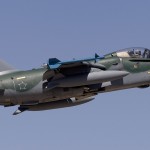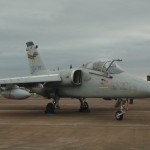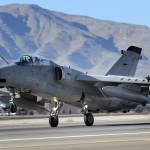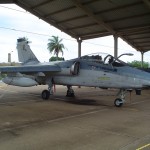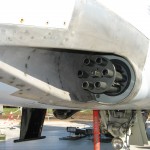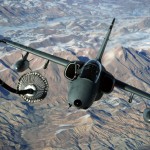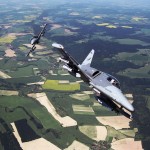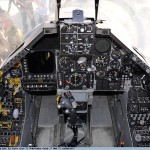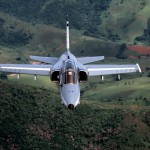An Air Force general with ties to the company pushing a Brazilian light attack plane for American purchase publicized on Monday a test flight he took in November 2011 of the Brazilian-made Embraer EMB 314 Super Tucano light attack turboprop plane.
Lieutenant General David Deptula, a former fighter pilot and currently Air Force Deputy Chief of Staff for Intelligence, Surveillance and Reconnaissance, sits on the advisory board for Sierra Nevada Corporation. The company is partnering with Embraer and is lobbying for the Super Tucano in the USAF Light Support Competition.
Up for grabs: A $1 billion defense contract, and Sierra Nevada has a lot of chips riding on this extremely contentious competition. The winner of the Light Support Competition will get to outfit American allies with its planes, starting with Afghanistan. The winner will be announced next year, after what have been and are sure to continue being lengthy and expensive public relations and lobbying campaigns.
MarketWatch posted the Sierra Nevada press release in its entirety on Monday.

The Air Force cancelled the deal shortly afterward, citing “unspecified irregularities in the contract process” amid a threatened lawsuit by Hawker Beech, whose AT-6B is the only other finalist in the competition.
Hawker Beech, an American company, recently launched a public support campaign. Sierra Nevada has its own.
Deptula did a publicity stunt test flight of the Super Tucano, which is being called the A-29 in the U.S., using the traditional “attack” naming convention, as the plane makes its American debut at the Oshkosh air show. The plane is on display during the show, Sierra Nevada said in a statement.
The Super Tucano has been a remarkable success for Brazil, which is exporting it all over the world. It is a low-cost, easy-to-maintain turboprop with fourth generation avionics and systems that make it superb in an counter-insurgency role. Colombia, Equador, Chile, the Dominican Republic, and Indonesia all use the attack plane, and orders were recently placed by Angola, Burkina Faso and Mauritania for that role.

Deptula sang the Super T’s praises in Sierra Nevada’s media release:
“Given that now, more than ever, the United States and its allies need to find cost-effective, innovative ways to successfully defeat a variety of non-traditional threats, I wanted to see for myself whether the Super Tucano deserves the superb reputation it already possesses,” he said. “One of the things you notice immediately is the very wide track and high ground clearance of the Super T. Wide, sturdy gear, and low pressure tires mean superior ‘off road’ and crosswind performance.
“The A-29 flies like a ‘fighter’ should. It’s responsive, yet forgiving; rugged, yet advanced. If it weren’t for the prop out front, I would have thought I was flying a jet.”
On the other side of the battlefield, the AT-6B is an armed variant of the Beechcraft T-6 Texan II turboprop trainer with the same Pratt & Whitney engine as the Super Tucano. It is slightly smaller but is very comparable in many levels. The Super Tucano was built as a combat aircraft and features things like integrated machine guns, which the converted trainer has to relegate to hardpoints.

 Brazil is seeing an economic windfall from military exports to Africa, as American export restrictions to often war-torn regions have given an opening for other industrialized nations to cash in.
Brazil is seeing an economic windfall from military exports to Africa, as American export restrictions to often war-torn regions have given an opening for other industrialized nations to cash in.

